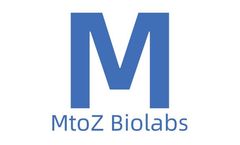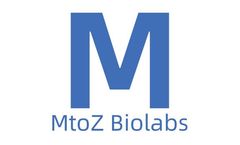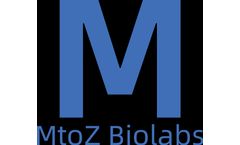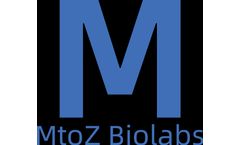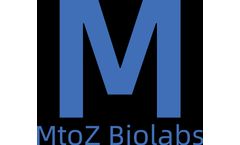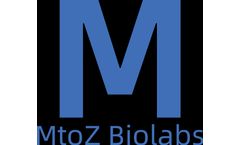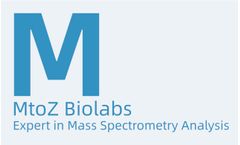Refine by
Neurodegenerative Diseases Articles & Analysis: Older
52 articles found
These projects involve a variety of disease targets, including cancer, inflammation, and neurodegenerative diseases. ...
This mimetic action allows researchers to enhance or restore the expression of target genes that are otherwise downregulated in diseases such as cancer, neurodegenerative disorders, and cardiovascular diseases. ...
This characteristic is being explored in the treatment of conditions such as osteoarthritis, cardiovascular diseases, and neurodegenerative disorders. Immunomodulation: These cells exhibit immunomodulatory properties, which means they can influence the immune response. ...
Observing such differential expression is crucial for understanding cellular physiology and disease mechanisms. For example, some proteins may be upregulated or downregulated in health and disease states, or between normal and treated cells.Detection MethodsThe most commonly used technique is mass spectrometry, particularly liquid chromatography-tandem mass ...
Signal Transduction ResearchBy detecting the phosphorylation level of specific proteins, the intracellular signal transduction pathways can be studied.2. Disease Mechanism ResearchProtein phosphorylation plays crucial roles in many diseases, including cancer, neurodegenerative diseases, and cardiovascular ...
Acetylation is a common post-translational modification of proteins, typically occurring on lysine residues of proteins, and plays a crucial role in regulating protein function, cell signaling, gene expression, and disease onset. For instance, the acetylation state of histones directly influences chromatin structure and the regulation of gene expression.Acetylation detection ...
Bioenergetics ResearchUnderstand the basic principles of cellular energy metabolism.2. Disease MechanismsStudy changes in oxidative phosphorylation in various diseases (such as neurodegenerative diseases, cancer).3. ...
Among them, glycoproteins are an essential biomarker that plays a key role in many biological processes, including disease onset, progression, and treatment response. The Tandem Affinity Purification (TAP) of glycoprotein is an efficient detection method.What Is a ...
Furthermore, changes in the mitochondrial proteome may be associated with certain diseases, including neurodegenerative diseases, cancer, heart disease, diabetes, and genetic disorders.Methods of Mitochondrial Protein SequencingMitochondrial protein sequencing typically involves the following steps: firstly, scientists need to ...
But when the time is right, it can hit the brakes on this growth, ensuring everything stays balanced and healthy. TNC Protein's Role in Disease Like many proteins, when TNC protein goes awry, disease can result. ...
Autophagy has also been implicated in pathological conditions including neurodegenerative diseases, cancer, and inflammatory diseases. Modulation of autophagy has become a potential therapeutic target in human diseases. ...
Tau protein is a microtubule-associated protein, mainly present in nerve cells, and participates in the stabilization of microtubules. In certain neurodegenerative diseases, such as Alzheimer's disease (AD), Tau protein may undergo abnormal phosphorylation and aggregation, forming so-called Tau tangles or neurofibrillary tangles.Ubiquitination is ...
In post-translational modification (PTM) of proteins, ubiquitination is considered one of the most critical processes in regulating cellular functions and various diseases. The identification of ubiquitination sites becomes very crucial for understanding the mechanisms of ubiquitination-related biological processes. ...
These methods have improved the sensitivity and specificity of ubiquitination event detection, allowing researchers to thoroughly analyze the role of ubiquitination in diseases and cellular processes. Western Blotting This is one of the most commonly used detection methods. ...
Functional Diversity The specificity of ubiquitination sites determines the fate and function of target proteins, such as degradation, localization, and activity regulation, which is the basis for fine regulation of cells. 2. Disease Relevance Abnormalities in ubiquitination sites, whether due to mutation or imbalance in regulation, are associated with the development and ...
These post-translational modifications are not only vital for cell function, but their abnormal changes are also associated with cancer, neurodegenerative diseases, and other pathological conditions. Therefore, research on histone PTMs can help to deepen our understanding of disease mechanisms and develop new therapeutic strategies. ...
Here are some key points about histone SUMOylation: 1. SUMOylation and Diseases Abnormal SUMOylation is associated with various diseases, including cancer, neurodegenerative diseases and cardiovascular diseases. Therefore, studying the SUMOylation of histones is crucial for understanding the molecular mechanisms ...
Pathological States Abnormal patterns of histone phosphorylation are associated with various diseases (such as cancer, neurodegenerative diseases) and can lead to dysregulation of gene expression and abnormal cellular ...
Illuminating the Path to Understanding Disease But the potential of fluorescent biopolymers goes far beyond just cancer. Researchers are exploring how to use these glowing biopolymers to study the progression of neurodegenerative diseases like Alzheimer's and Parkinson's at the molecular level. By creating biopolymers that bind to the toxic ...
ByMatexcel
Alongside the drug-target relationship, the analysis of the drug-disease relationship is equally important. This encompasses the understanding of how a drug's mechanism of action aligns with the underlying pathophysiology of a particular disease. By carefully examining the complex interplay between a drug and the disease it aims to treat, ...




